All Global articles – Page 58
-
 White papers
White papersESG Viewpoint: The challenges of realising zero-carbon cement
Can cement emissions be curbed, while still allowing for crucial infrastructure growth?
-
 White papers
White papersThe Road to Decarbonization Is Bumpy. Carbon Allowances Can Help.
The global pursuit to limit rising temperatures has bolstered carbon allowances markets. As these instruments flourish, they’ve become a distinct asset class that offers hedging and other benefits in a portfolio.
-
 White papers
White papersFrom Traditional to Sustainable Growth
This article is a 360-degree analysis of the growth investment concept. Academics generally circumscribed it to a mere anti-value status. We show that growth-oriented stocks not only present the characteristic of being expensive and over-priced.
-

-
 White papers
White papers10 investment themes for 2023
Although many investors are expecting a return to normal after inflation subsides and central banks stop raising interest rates, we believe markets are undergoing significant changes and it might be necessary to reset expectations in this new environment.
-
 White papers
White papersClimate Transition: Burning Questions for Credit Strategies
Transitioning the global economy to net-zero emissions presents a significant challenge, but it also offers an opportunity for fixed income investors—in energy, utilities, and beyond.
-
 Asset Manager News
Asset Manager NewsGLP Capital Partners recognized in 2022 PERE Global Awards
GLP Capital Partners Limited (“GCP”), a leading global alternative asset manager that focuses on thematic investing across real assets and private equity, is pleased to announce that it received two awards at the 2022 Private Equity Real Estate (“PERE”) Global Awards.
-
 White papers
White papersCross Asset Investment Strategy - March 2023
European equities are favoured in a fragile earnings outlook
-
 White papers
White papersRoving recession to staggered recovery?
In this monthly series, we take a quick, comprehensive look at current macroeconomic themes that matter to clients.
-
 White papers
White papersNotes from the Road: Inflation, Private Assets and a Cautious Consensus
The beginning of the year always offers a chance to catch up with a broad range of clients who are in the mode of thinking about the big picture outlook: pension funds, insurers, consultants and sovereign wealth funds across Australia, Asia, Europe and North America. This note reflects on the key issues that clients have wanted to talk about in the early months of this year. Collectively, these topics give us a picture of what’s on investors’ minds.
-
 White papers
White papersAhead of the Curve, Q1 2023
Read the latest views from our Chief Economist Silvia Dall’Angelo as she outlines three scenarios that could influence markets in the coming months.
-
 White papers
White papersCOP 15: Global Biodiversity Framework elevates nature-related risks and opportunities
In December 2022, after multiple Covid-19-related delays, the conclusion of the COP 15 conference in Kunming, China, saw the agreement of a 2030 Global Biodiversity Framework which aims to halt and reverse nature loss by 2030.
-
 White papers
White papersSetting the tone: Private Equity International interview with Markus Benzler
Co-investment will continue to play a crucial role in PE despite the present macro environment, says Markus Benzler, head of multi-managers private equity at UBS Asset Management
-
 Asset Manager News
Asset Manager NewsStrong growth in AUM to EUR 59.1bn (+21.6% y-o-y) in FY 2022 demonstrates resilience of PATRIZIA’s real asset investment management platform
FY 2022 preliminary financial results: Real Assets AUM and product offering further diversified with now close to 15% of Assets under Management (AUM) in the infrastructure sector with further strong growth potential and more than 11% of AUM outside of Europe, especially in Asia-Pacific and North America
-
 White papers
White papersGlobal Investment Views - March 2023
“The dichotomy between the real economy and markets is increasing even as the earnings outlook is getting weak, leading us to be sceptical of the risk rally.”
-
 White papers
White papersThe soaraway rebound of global tourism
Global air traffic forecast to reach pre-Covid levels this year, boosted by the reopening of China.
-
 White papers
White papersStewardship navigating a polarised world
With the publication by EOS at Federated Hermes of its 2022 Annual Review of engagement and voting highlights, Leon Kamhi, Head of Responsibility and EOS, reflects on our stewardship activity in 2022, which was carried out within a polarised landscape for active ownership.
-
 White papers
White papersEOS Engagement Plan 2023-2025
Our engagement plan identifies 12 key themes and 32 related sub-themes. We find this breadth of coverage is necessary to reflect the diversity of the issues affecting companies in our global engagement programme.
-
 White papers
White papersThe 10 themes that could make or break an EM renaissance
In our 2023 outlook, Kunjal Gala, Head of Global Emerging Markets, outlines the key factors that could drive market returns for EM equity investors in the year ahead.
-
 White papers
White papersDirection of rates hangs over equities rebound
Expectations of early easing tempered by sharp rise in US retail sales.


